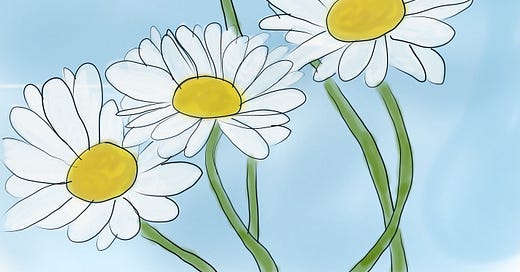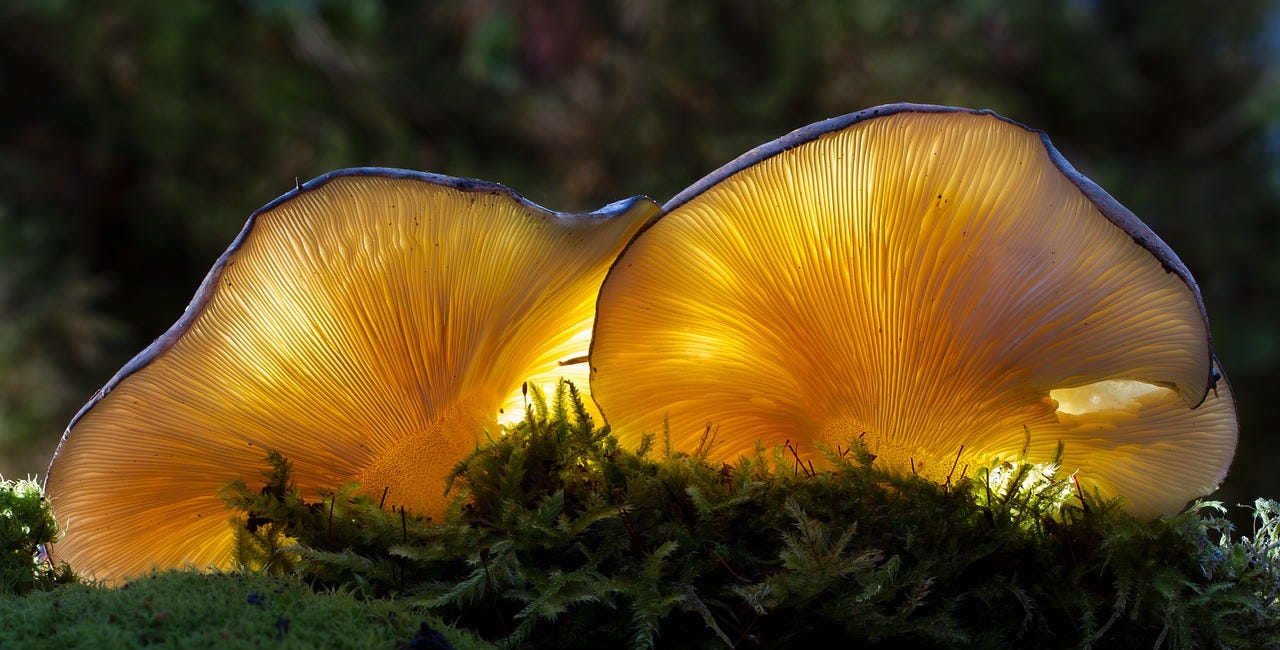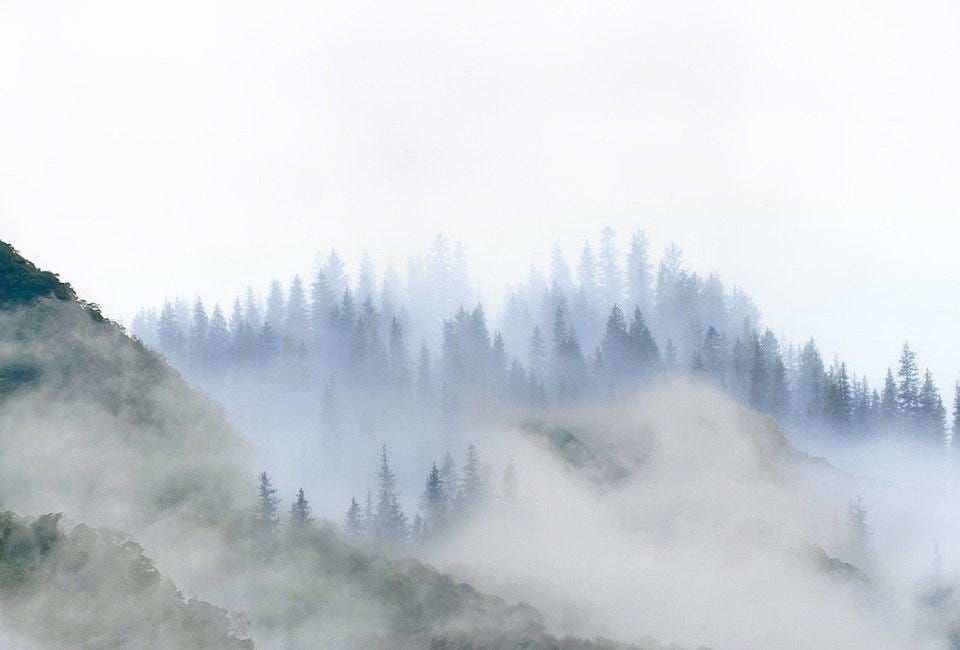Chapter 5: The Kingdom of Plants
Next stop on the grand tour is a visit with sky-high sequoias and minute moss in the Kingdom of Plants. Includes parts of plants and vascular vs non-vascular plants.
Part 1: Tiptoe Through the Tulips (and the Liverworts)
Consider the lilies how they grow: they toil not, they spin not; and yet I say unto you, that Solomon in all his glory was not arrayed like one of these.
-Luke 12:27 KJV
Hop on board your bird to continue the Grand Tour (I think I’ll go with a peregrine falcon)! Today, we will be visiting the Kingdom of Plants. The smell of millions of flowers fill the air, as you fly among the trees and ferns, the grasses and bushes. The kingdom is full of green, green, and some more green, with flowers exploding in a burst of color here and there.
Why are all these plants so green? I mean, the trees have some brown bark and sometimes grass or leaves turn yellow and red, but that just emphasizes the point that all of the creatures here are mostly green. You can thank chlorophyll for that: tiny structures inside plant cells that let the plants make their own food through photosynthesis. Nearly all creatures that are green (and are not animals) have chlorophyll, including those bacteria and protists that can make their own food.
As you explore the kingdom you will see all the flowers, trees, grass, and bushes from your backyard, four-leaf clovers, and towering redwood trees from California. You will also see the prickly cacti and aloes native to the desert and the towering pines and spruce of the mountains; those are plants, too, even though they don’t have the usual leaves. If you look closely, you will see even more bizarre plants, like moss (that fuzzy green stuff that grows close to the ground or on the sides of trees and rocks), willowy seaweed and its cousin the green algae, and those fantastically funny-looking creatures known as liverworts (short little guys whose leaves really do look like flat livers).
One thing that is you might notice about most of these creatures is that most plants, whether a poppy or a poplar, have a similar shape. Imagine a daisy (as I often like to do) – can you picture it’s sunny face standing tall on a slender green stem? The stem, along with any branches, holds up the plant and provides a path for water and food to travel from leaves to roots and back again. Along the stem of the daisy, you will find the leaves, the food factory of the plant where most of the photosynthesis takes place.
If you were to pull up the daisy (you wouldn’t do that to my daisy, would you?), we would find the roots, like a tangle of spaghetti in black dirt sauce. The roots keep the plant, well, rooted; without them, the plant would wash away or blow over in the wind, but with them it can stand proudly. The roots are also how the plant drinks, getting water and vital minerals from the soil to keep our lovely daisy healthy and sunny.
When temperatures start to warm after the snowy winter, you will see a small ball start to form on the end of the new daisy stems – the bud. Once that bud opens to the glorious sunshine and soft wind and rain, you will see the pretty white and yellow flower, that bright, fragrant feature which attracts bees, butterflies, or other animals. The flower invites all of these visitors so that it can grow the next generation, which is in the form of seeds like tasty walnuts and hazelnuts, spiky gum balls and pine cones, and sticky burrs. Even corn, peas, and wheat are seeds that we eat. The Kingdom of Plants might be quiet and serene, but it is still full of growth and life.
Check out Chapter 5A Podcast Episode!
.
Part 2: Growing Tall and Staying Small - A Map of the Kingdom
Praised be my Lord for our sister, mother earth,
The which sustains and keeps us
And brings forth diverse fruits with grass and flowers bright.
- St. Francis of Assisi.
Looking at the very thick atlas of the Kingdom of Plants (scientists have identified nearly 300,000 species!), we would find the regions (the divisions) split into two halves like a country at war with itself. The first (and much smaller) part, contains only little guys like the algae, mosses, and liverworts, while the second part has all the towering giants, from the pine tree to the prairie grasses. Fortunately, the Kingdom of Plants is at peace; the separation comes from the structure of the plants.
So, what’s this big difference? Well, let’s compare the oak tree in my front yard with some of the moss that grows on its side. They are both green, and they are both autotrophs that make their food through photosynthesis. But, it is pretty absurd to think that they have much in common besides that – our tree is nearly fifty feet tall while the moss is only a fraction of an inch.
How can our oak tree grow so very tall (after all, even animals don’t grow that tall)? Trees are vascular plants – they have features like tubes running from their roots through their trunk and branches, and out to the very tips of their leaves. This transportation system moves water, minerals, and food through the planet quite efficiently, allowing them to grow much taller than other creatures and live in harsher environments.
Our fragile little moss, on the other hand, is a non-vascular plant that lack this tube system. It has no way to transport water and food throughout its body, and consequently has no real stem or even roots. The leaves of this type of plant are often insanely thin (even just one cell thick!), with only little hair-like structures known as rhizoids to anchor themselves into place. How do they get water if they have no roots?! I hear you cry. Well, they mostly absorb it from the air, so our petite moss must stay where it is humid or damp and cannot venture into drier, harsher climes. The moss on my tree will also never get to have any sunny flowers (although the idea of a moss with a giant orange flower is pretty hilarious), but instead it has to reproduce with spores, which we will talk about more later.
What about plant-like protists? Aren’t they like non-vascular plants? After all, they often have similar names like green, red, and brown algae. Plants and plant-like protists are really similar (so similar, scientists are still moving creatures around between the groups), but to really see the big difference, you have to break out a microscope and look at their cells. Plants all have stiff cell walls made of cellulose (a kind of carbohydrate). Plant-like protists, on the other hand, have cell walls made of protein or silica (like sand) or something else that is completely unknown (no kidding – the yellow-green algae has cell walls made of some unknown material!).
Before we hop back on our birds to head to the next kingdom, I have to show you my favorite weird plants – the carnivorous plants. These are the bizarre creatures that both make their own energy from the sun and eat animals. Plants such as the Venus flytrap and the pitcher plant have amazed and baffled generation after generation, a living paradox. These creatures live in places where the soil lacks important minerals, so to make up for the deficit, they catch and consume animals for their minerals, but not actually for energy. So, even these amazingly bizarre creatures are still autotrophs like all of the other plants.
Check out Chapter 5B Podcast Episode!
Ready for More?
Check Out the Next Chapter
Chapter 6: The Kingdom of Animals - Invertebrates
Welcome to the first installment in the Kingdoms of Creation home education science program. We’re glad you’re here. Each chapter is split into two parts: Part 1 is for younger students (usually K-4); Parts 1 and 2 together are for older students (usually 5-8). The Kingdoms of Creation is a comprehensive biology program. See the full table of contents
Or the Previous Chapter
Or Visit the Welcome Page
Welcome to the Kingdoms of Creation
A long time ago in land not so far away, the Creator made a world. This world was big and beautiful, wild and wonderful, fantastic and frightening. It was full of amazing creatures like the ping-pong tree sponge (an immobile creature that looks just like its name sounds but eats shrimp in the deep dark of the sea) and the dragon mantis (a large brown …








